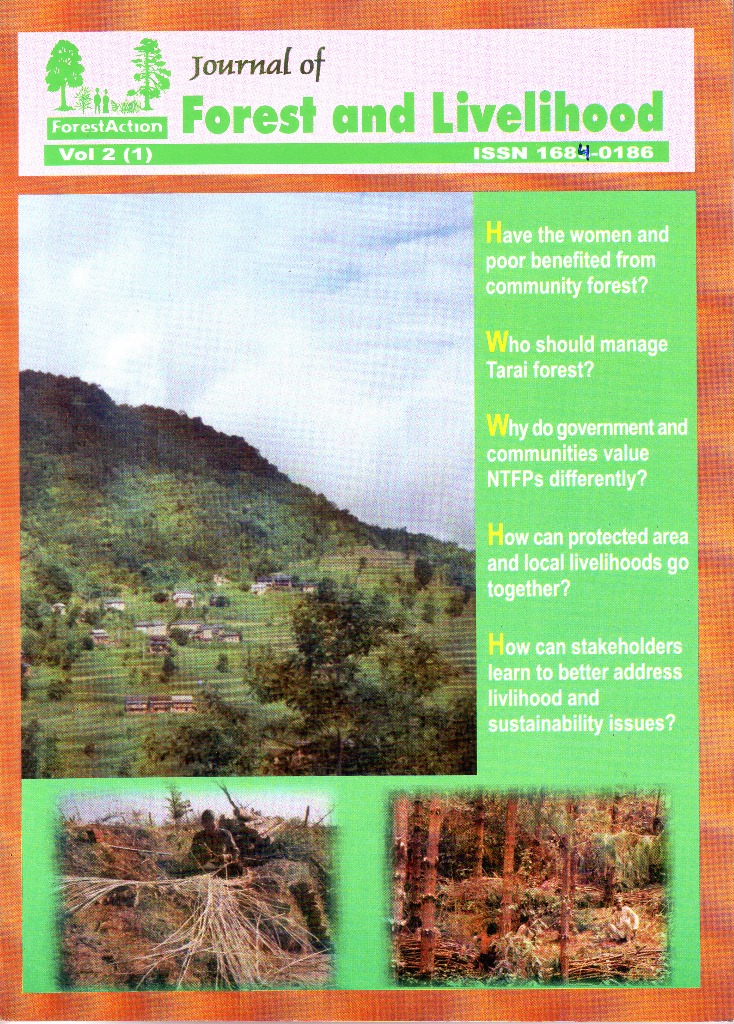Household characteristics and common property forest use: complementarities and contradictions
DOI:
https://doi.org/10.3126/jfl.v2i1.59655Keywords:
Common Pool Resources, labor allocation, collective action, socio-economic attributesAbstract
Being limited in supply but accessible for community usage, sustainable management of Common pool resources is still an important question facing both development planners and the academia. Experience from community forestry program in Nepal, and elsewhere, has so far indicated that poorer households are still marginalized even if resources are managed under community ownership. In this paper, I seek to analyze the socio-economic attributes of households that determine labor allocation decisions for forest product collection activities. This will help better understand why poorer groups have not been benefited from the management of community forests. I will then highlight the need for more effective policy and institutional interventions that would help ensure efficient and equitable access to the local level natural resource base.
Downloads
Downloads
Published
How to Cite
Issue
Section
License

This work is licensed under a Creative Commons Attribution-NonCommercial 4.0 International License.
CC-BY-NC: This license allows reusers to distribute, remix, adapt, and build upon the material in any medium or format for noncommercial purposes only, and only so long as attribution is given to the creator.





